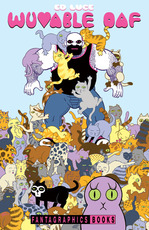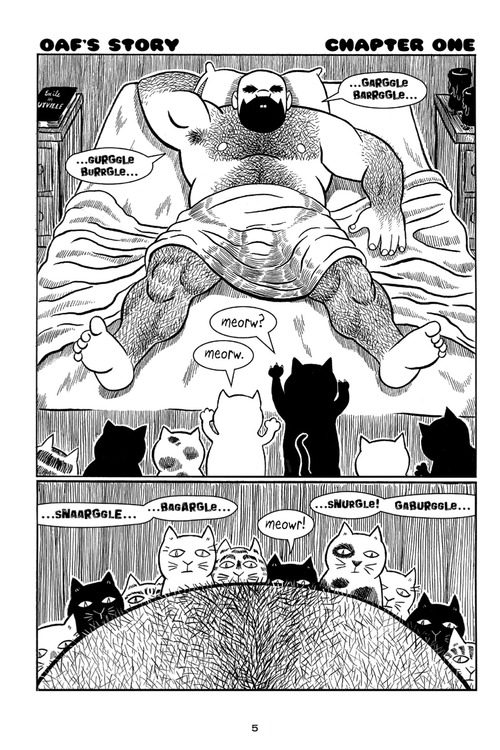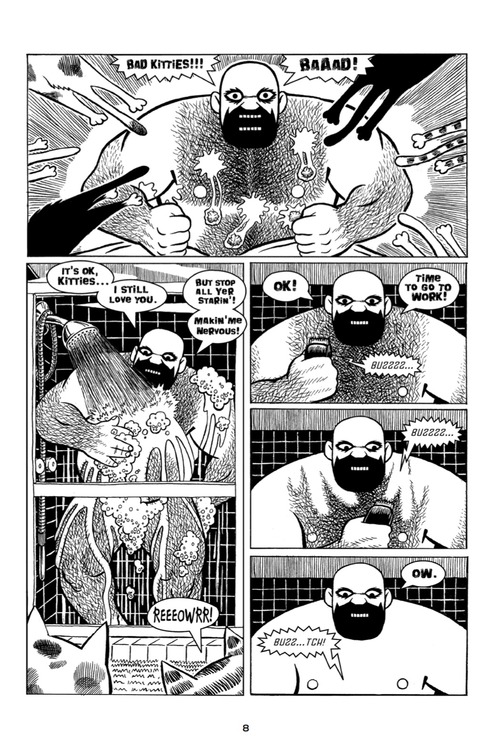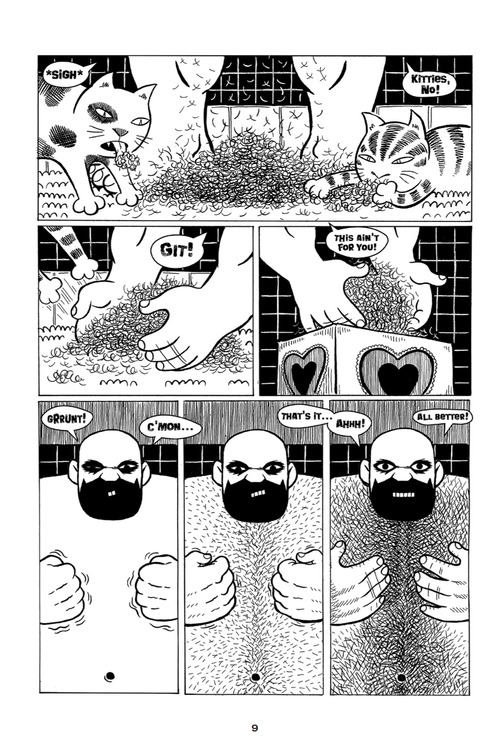Wuvable Oaf by Ed Luce

Writer & Artist: Ed Luce
Publisher: Fantagraphics
Release Date: May 2015
Originally self-published with the help of a Prism Comics Queer Press grant, Ed Luce’s Wuvable Oaf centers on the titular Oaf: a large, hairy, gay, former-pro wrestler. After retiring from wrestling, Oaf spends his day running a kitten orphanage with his dad and fawning over impish men he sees on the street. Though it contains fantastical elements, the series is mostly a straightforward romance tracking Oaf’s involvement with Eiffel, the lead singer of heavy-metal band Ejaculoid.
The series is rendered in stark black and white, with some textural shades of gray, and Luce’s strong authorial voice is present in every panel. His use of spotted blacks creates a heavy contrast between expanses of negative space, and forms and figures are largely defined by the interplay between those spaces. This stylistic identifier recalls the complex patterns of Mondrian—more in function than in form—and the result is a natural engagement of the eye; both artists utilize clear discernment to emphasize and deemphasize features (in Luce’s case) or notional concepts (in Mondrian’s).
To further the comparison: both artists prudently utilize shortcuts that thin the mediation between their work’s intent and its affect. The totality of Luce’s illustrative aesthetic is derived from this seemingly simple attention to definition—the bulk of Oaf’s body, clothes, beards, eyes, idiosyncratic physical features are all visible and readily identifiably, but only though the contrast of black and white. The ubiquitous cats that populate Oaf’s life are all emotive blobs of ink (or the conspicuous absence of it), and they slink and skitter across the page.
-

-

-

-

-

-

-

-

-

-

-

-

-

-

-

-

-

-

-

-

-

-

-

-

-

-

-

-

-

-

-

-

-

-

-

-

-

-

-

-













































